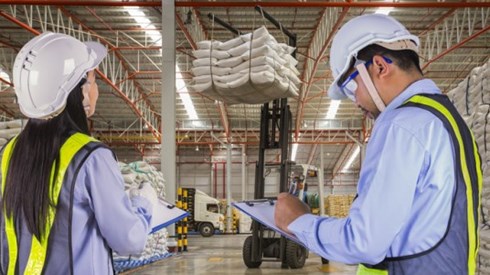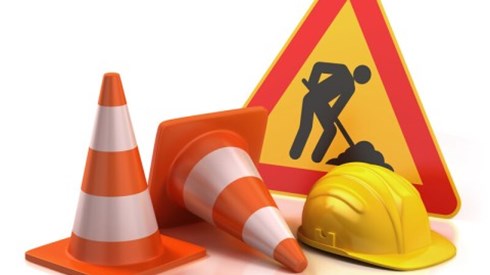Creating a Culture of Safety Is Critical for Reducing Accident Losses

August 05, 2020

As employers look to reduce losses due to employee accidents and injuries, making safety part of the organization's culture is essential.
"Culture is the key," said Andy Johnson, chief risk officer at Captive Resources LLC and chairman of the National Safety Council. "It's what the company and its people are doing when nobody's looking, when you don't have to measure it, you don't have to think about it, it just is. It's always there."
Mr. Johnson and other speakers discussed safety culture as part of a webinar titled "Culture Is the Key!" presented as part of the Captive Insurance Companies Association's Building on the Best 2020 webinar series.
The value of a making safety part of an organization's culture can be particularly apparent when companies move to captive insurance. Mr. Johnson used the example of a produce company for which workers compensation "was just an allocated cost" prior to joining a group captive, with little perceived relationship between claims and costs.
"The captive model lowered their premiums significantly," he said. But becoming an insurance company owner also had a dramatic impact on the organization's culture, Mr. Johnson said.
"That drove automatically a total shift in the culture of safety and risk management within the organization," he said. "It wasn't just an expense, and it wasn't just some insurance company handling their claims or that they transferred the risk to. It suddenly was their dollars. It was really meaningful to them, to their bottom line."
For the produce company, there was "a total shift in thinking from the buying of insurance to the owning of insurance," Mr. Johnson said.
As companies look to develop a safety culture, it's important to get involvement from across the organization. Management's participation is essential, but it's also important to listen to the voices of employees, said Gordon Padera, executive vice president at Gallagher Bassett Services.
Mr. Padera outlined a number of key factors in developing a safety culture. One is management's support of the process including defined safety policies, having safety manuals in place, and participation in safety committee meetings and new employee orientation programs.
"It's very easy for a company to say safety's number one," Mr. Padera said. "The questions I then ask are where does production rate? Where does profit rate? And where does quality rate?" In a good safety culture, he said, those four elements—productivity, profit, quality, and safety—all mesh to create a solid culture. "You can't have safety stand by itself," he said. "We prefer hearing 'Safety is part of our process.'"
Management also needs to participate and engage employees in the safety process by actually walking the production floor, for example, and making sure things are being done safely.
There also needs to be a broad sense of ownership of safety efforts, with employees having a way to report hazards to management and accountability across the organization for meeting safety standards. For a business with multiple locations, that means holding individual locations accountable for their safety performance. "It's important that ownership is throughout the organization," Mr. Padera said.
Safety can't be a one-person show. Instead, the safety culture must permeate the organization. "What we don't want to see is 'Oh, it's the safety person's responsibility,'" Mr. Padera said. "It has to be everyone's responsibility."
Finally, there's the company's alignment with safety practices, including whether it follows proper regulatory standards and protocols, how the safety process is documented, and whether management is conducting interviews with employees and observing conditions in the workplace. "It's important to have a systematic approach," Mr. Padera said.
Lorraine Martin, CEO and president of the National Safety Council, noted that while culture is leader led, it's executed by all the individuals that are part of an organization.
Still, she said, it's important that leaders "show up" and especially that they "show up when you see things employees are struggling with."
"It gets a bit to understanding root cause," Ms. Martin said. "What might be causing some of your risks?"
She noted that in the current COVID-19 environment, "It's really important for everyone to say, 'What is going on in my operation?' and putting your own eyes on it and, as a safety leader, showing up yourself, making sure you walk the floor, that you're asking people 'What's in your way?'’ making sure you understand the answers you get, and if you don't, you ask the second and third and fourth questions until you really feel comfortable that you're helping your employees."
Managers and other business leaders also need to make sure they're really hearing from their employees and that they feel comfortable speaking up about safety issues, she said.
Ms. Martin posed the following three questions for companies considering their safety culture.
- Are you focusing on the right risks at the right time and making sure you're showing up before those risks become issues for your workforce and become claims?
- Are you asking the right questions? "And being brave enough to really have that be open-ended," she said. "Be ready to hear whatever it is, and be ready to take action."
- Are you empowering others to make a difference? Whether it's leaders and managers or frontline employees, it's important that employers ensure "that it's baked into your culture that everyone's empowered to make sure that everyone goes home safe," Ms. Martin said.
Mr. Padera said he's seeing more companies invest in analytics to better understand and mitigate the sources of accidents but also to try to translate loss data into something employees can understand, such as how many widgets the company would have to manufacture to pay for a loss.
"The most important thing when you're thinking about culture is making the losses real to the employees so they can actually grasp it," he said.
August 05, 2020


